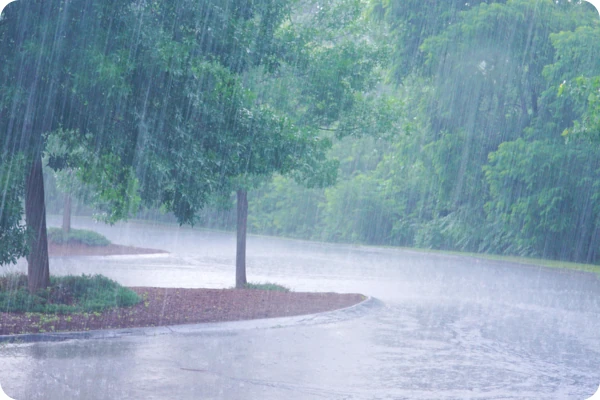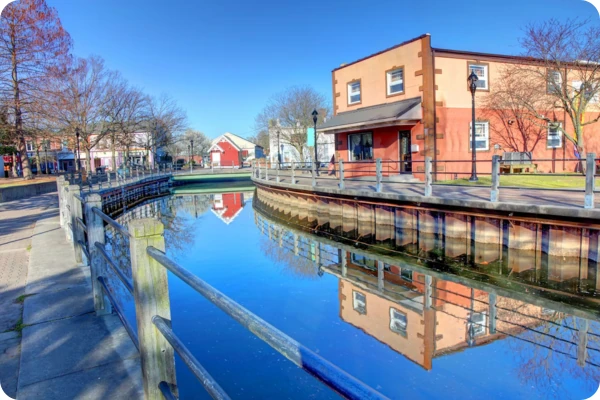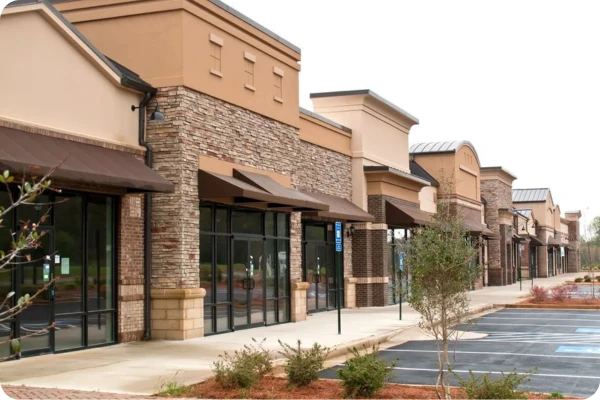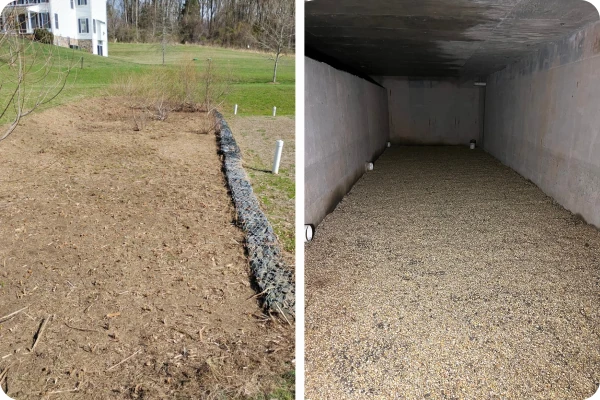Heavy rainstorms can reveal hidden weaknesses in your stormwater management systems – and if those weaknesses aren’t addressed, the damage can cost far more than regular maintenance ever would.
When stormwater isn’t properly managed, commercial properties, HOAs, and local communities face flooding, erosion, pollution, and even fines. In this guide, we’ll break down the real-world consequences of poor stormwater control and show you exactly what to inspect after heavy rain to protect your property and stay compliant.

Why Does Stormwater Management Matter After Big Storms?
Urban and commercial properties are covered in impervious surfaces like rooftops, roads, and parking lots. These prevent water from naturally soaking into the ground. During a heavy rain event, all that runoff needs to go somewhere – and if your stormwater systems are clogged, damaged, or undersized, it can overflow into areas it shouldn’t.
The Risks: What Happens When Stormwater Isn’t Managed Properly
🚨 Localized Flooding
Uncontrolled runoff can flood parking lots, basements, and even public roadways. Flooding isn’t just inconvenient – it can disrupt operations, damage property, and create safety hazards for tenants and customers.
🌳 Erosion & Structural Damage
Heavy runoff can wash away soil around embankments, retaining walls, or foundations. Over time, this hidden erosion can cause slopes to fail and damage building structures.
💧 Water Pollution
Runoff picks up oil, chemicals, trash, and other pollutants. If your system doesn’t capture and filter these contaminants, they end up in local streams and rivers, harming water quality.
⚖️ Regulatory Non-Compliance
Neglected or failing stormwater systems can result in costly fines or violations of local, state, or federal stormwater regulations.
What to Inspect After a Heavy Rain Event
To avoid these problems, it’s crucial to inspect your stormwater systems after significant rainfall. Here’s a practical post-storm inspection checklist:
✅ Ponding Water: Are there areas where water is pooling and not draining within 48 hours? This could indicate poor grading or clogged drains.
✅ Sediment Buildup: Check ponds, vaults, and channels for excess sediment that may be restricting flow.
✅ Debris & Trash: Inspect storm drains, grates, and inlets for blockages. Trash and leaves can quickly clog your system.
✅ Erosion: Look for signs of soil loss around outlets, slopes, pond banks, or drainage channels.
✅ Outfalls & Discharge Areas: Ensure water is exiting where it should and not causing unexpected washouts.
✅ Vegetation: Overgrown or dead vegetation can obstruct flow or cause structural damage.
✅ Odors or Pollution Signs: Foul smells or visible contaminants near discharge points may mean pollutants are getting through your BMPs.
Proactive Steps to Prevent Stormwater Surprises
- 📅 Schedule Routine Inspections: Professional inspections catch small problems before they become major issues.
- 🧹 Keep Systems Clear: Regularly remove debris, trash, and excess vegetation.
- 🗂️ Document Everything: Keep inspection and maintenance records to show regulators your site is compliant.
- 🤝 Work With Experts: A trusted stormwater contractor can customize a plan that meets local requirements and handles unique site challenges.
Protect Your Property, Protect Your Budget
Stormwater problems don’t have to be inevitable. With proactive inspections after storms and regular maintenance, you can reduce the risk of flooding, erosion, pollution, and costly fines.
Need help inspecting your stormwater system or addressing post-storm damage? Contact us today at (410) 231-3455 – we help property managers, HOAs, and commercial owners throughout Maryland, Virginia, DC, and Delaware stay ahead of the storm.




